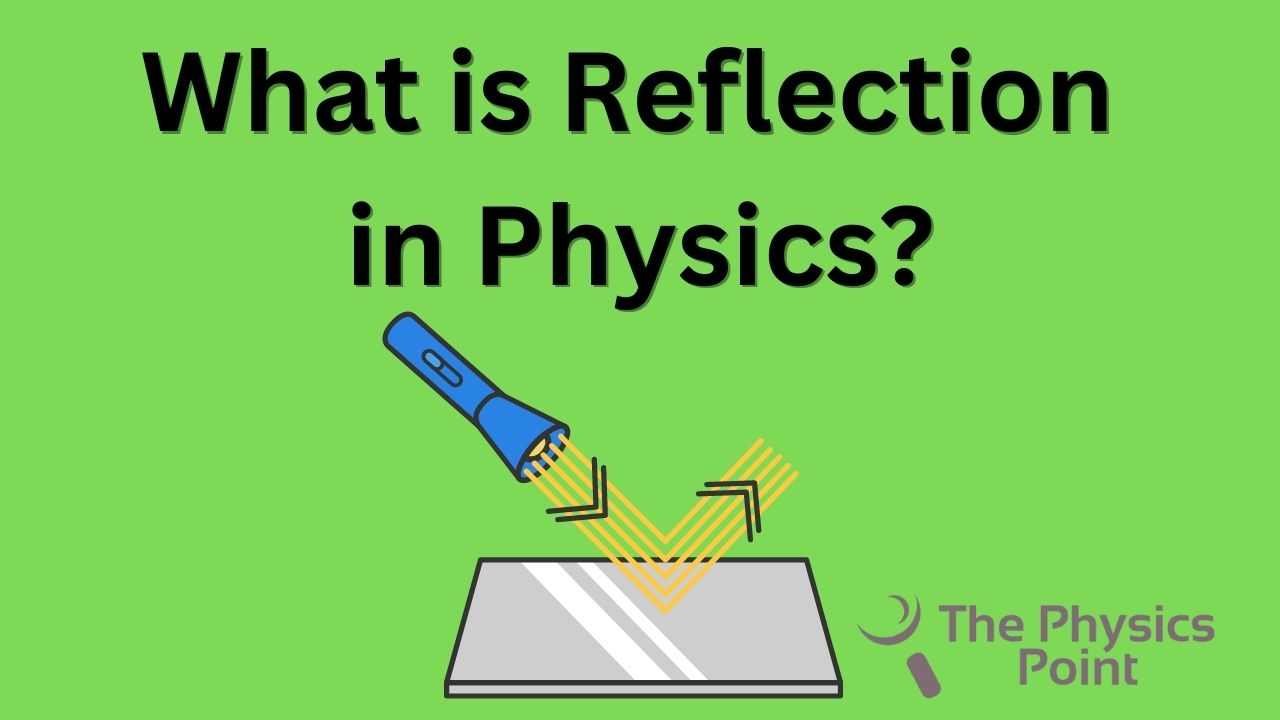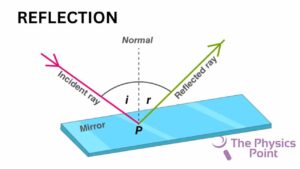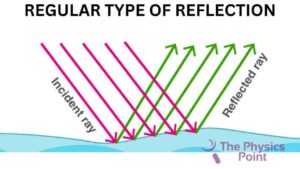What is Reflection in Physics? Definition, Laws and Types

Hello, welcome to the site of Physics point. once again we are back with a new and fresh article on Physics which is what is reflection in Physics. We will describe many things about reflection and also tells you the definition of reflection. In this article, we will define reflection in very easy words. In the previous article, you have learned about optics and its branch and also what is the importance of optics in real life. This article is the next part of the previous one. You must read what is reflection in physics from start to end so that every concept should be clear in your mind about the phenomenon of reflection.
The important points and questions of today’s article What is Reflection in Physics? are such what is a reflection in physics, reflection definition physics, reflection in physics definition, what is reflection of light, What are the types of reflection what are the laws of reflection, In how many types reflection is divided what is a regular reflection and what do you understand by the diffuse reflection and multiple reflections. so no we are going to start our very important article What is Reflection in Physics?
What is Reflection in Physics (Definition)?
Have you ever thought about the images you see with the help of a mirror? What is the phenomenon beside it? So for your kind information, it’s all about reflection. According to this phenomenon –
When a light ray comes on a smooth polished surface Light ray bounces back at some angle, it is called a phenomenon of reflection of light. The ray that comes to the smooth surface is called an incident ray and the ray which is reflected off to the surface is called a reflected ray. On the smooth surface if we draw a perpendicular line it is known as the normal. You can understand this by seeing the diagram below-

here (i) is the angle of incidence and as you see (r) is the angle of reflection with the normal and the reflected surface.
Laws of Reflection
To understand the reflection phenomena in a scientific way there are two laws about the reflection of light rays. Hair smooth surface can be anything like a mirror, a smooth metal surface, or maybe a clean water layer of any source of water or in glass also. Reflection has two laws given below –
- For the phenomena of reflection to occur, the incident ray and the reflected ray, and also the normal line all must lie in the same plane.
- The second law of reflection state that the angle of the incident is equal to the angle of the reflection.
What are the types of reflection of light?
Reflection is also divided into some parts to understand it in a very good manner. Here we discussed three types of reflection that are regular reflection, diffuse reflection, and multiple reflection.
1. Regular or Specular Reflection
This type of reflection refers to a very clear and sharp reflection. It means the image which you see in a mirror is a result of a regular or specular reflection type. You know that a mirror is made of glass and is coated with highly smooth polish in its one. So that the next part of the class works as a reflection surface. In the regular type of reflection there is not so much variation seen in the angle of reflection between various points of the surface this means that the blurring and haziness almost disappear from the images made by the mirror.

2. Diffused Reflection
There are some other types of reflective surfaces, unlike Mirrors. They are very rough and have a bad finish on them. The surfaces could be bear and torn and have scratches or a dirty area. This type of surface leads to a bad image And quality and also the brightness has been lost somewhat.
In this case, this is observed that the angle of reflection and the angle of the incident ray is not equal to the reflection. The reflection ray is going in any direction with respect to the incident ray. So I think you will understand What is diffused reflection in Physics.
3. Multiple Reflections
You observed that when you stand in front of one mirror, you will see only your single image. have you ever suppose there what happened if you were standing in front of two mirrors? You will observe your images many times between both of the Mirrors.
However, the number of images that we see in 2 mirrors, depends on the angle between the mirrors at which between you are standing. When we decrease the angle between the two mirrors you observed that the number of images increases. And at the angle at zero between two Mirrors you observed that the number of images becomes infinite and you are unable to count that number of images. In this position, both two Mirrors are parallel to each other. Hope you are getting benefit from our article what a reflection in physics.
You can find the number of images by the given formula –
No. of images = (3600/ the angles between mirrors) – 1
Frequently Asked Questions (FAQs)
Ques. What are the two laws of reflection?
Ans. The first law is the incident ray and the reflected ray, and also the normal line all must lie in the same plane, and the second one is that the angle of the incident is equal to the angle of the reflection.
Ques. What are the types of reflection?
Ans. There are three types of reflection of light given below
- Regular reflection/specular reflection
- Diffused reflection
- Multiple reflections
Conclusion
The main conclusion of the topic of What is Reflection in Physics? is is that you should have learned all the definitions and the phenomenon of reflection. You have learned the two laws of reflection in very simple words and also learn about the types of reflection. If you don’t know about the Fundamentals of Physics you can visit our first article on our website. So dear Reader if you found this article knowledgeable to you you can also share this with your friends next day we will meet with a new article on Physics. Thank you.
